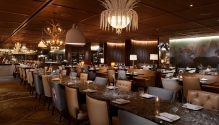5 Hotel Room Design Flaws That Annoy Guests (and Are Easy to Fix)
In today’s competitive hospitality landscape, the smallest design oversight can leave a lasting impression on guests. From impractical tea stations to tricky lighting controls, these common hotel room mistakes might be costing you repeat business.
By Rupali Sebastian
When it comes to ensuring a guest's comfort, the devil is in the details. While many hotels pride themselves on five-star amenities and sleek designs, it’s the little overlooked aspects of room functionality that often stand out to guests, and can lead to great frustration. Here are five common design mistakes hotels make, and why they can significantly impact the guest experience:
1. Keeping the kettle stowed way in a drawer
One of the most frustrating little annoyances for hotel guests is when they want a quick cup of tea or coffee and can’t locate the kettle. Often stashed away in a drawer or a cabinet, the kettle becomes something guests have to hunt for. Not only does this inconvenience guests, but it also diminishes the room's sense of welcome. A simple fix? The kettle should be placed atop the tea or coffee station, in plain sight. This way, guests feel invited to make use of the amenities, without having to play hide-and-seek first.

2. Inadequate privacy for the WC stall
Bathroom privacy is a must, yet many modern designs opt for aesthetic over practicality. Fluted or frosted glass doors for WC stalls may look chic, but they offer an awkward experience for guests, especially when you can still make out the person inside. No one wants to be seen—however vaguely—during such private moments. A solid door or a better privacy solution will ensure guests don’t have to feel uncomfortable using their own bathroom.

3. Improper window treatments

4. Poor acoustics
While hotel aesthetics get plenty of attention, the acoustics of a room are often neglected. Thin walls, doors near service areas, or poorly soundproofed windows can lead to a disrupted stay. Guests in rooms near service doors or elevators often report being disturbed by constant noise, such as doors banging or the sound of people walking past. A well-designed hotel room should minimise noise, ensuring that external sounds do not disturb the guest's relaxation. Adequate insulation, soundproofing, and better placement of service areas can significantly improve the guest experience.

5. Confusing lighting and AC controls
With modern technology, hotels aim to offer the latest in convenience—but sometimes, this backfires. Complicated lighting systems or temperature controls can leave guests frustrated. They may spend more time figuring out how to dim the lights or adjust the AC than enjoying the room. The key is to keep technology intuitive and user-friendly. Simple labels or an easy-to-use interface can go a long way in ensuring guests don’t feel overwhelmed by the room’s gadgets.

Paying attention to small but significant details can elevate a guest's experience and encourage repeat stays. By focusing on practical, functional design choices, hotels can avoid common pitfalls and ensure their guests feel truly at ease. After all, it's the thoughtful touches that make all the difference.


























